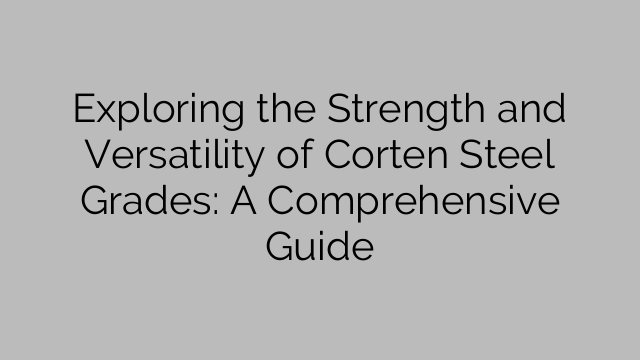In the world of construction and architecture, steel is undoubtedly one of the most widely used materials. With its remarkable strength, durability, and versatility, steel has become a preferred choice for a wide range of applications. Among the various grades of steel available, one that stands out for its unique characteristics is Corten steel.
Corten steel, also known as weathering steel, is a group of steel alloys that were developed to eliminate the need for painting and to form a stable rust-like appearance when exposed to the elements. It was first used in bridge construction in the 1930s and has since gained popularity in various architectural settings.
One of the key factors that distinguish Corten steel from traditional steel grades is its ability to resist corrosion. The rust-like appearance formed on the surface of Corten steel is not superficial but actually acts as a protective barrier against further corrosion. This natural patina layer helps to seal the steel and prevents the need for additional maintenance and painting.
Another notable feature of Corten steel is its exceptional strength. It has a high tensile strength, allowing it to withstand extreme weather conditions, including strong winds and heavy rain. This makes Corten steel an ideal choice for outdoor structures, such as bridges, sculptures, and facades, which require long-lasting durability.
Additionally, Corten steel can be easily fabricated into various shapes and forms, making it highly versatile in architectural design. It can be molded, cut, and welded to create intricate patterns, giving architects the freedom to explore their creativity. The characteristic warm-toned appearance of Corten steel also adds a distinct aesthetic appeal to any project, making it suitable for both modern and traditional designs.
The strength and versatility of Corten steel extend beyond architectural applications. It is commonly used in shipping containers due to its ability to withstand harsh marine environments. Additionally, Corten steel can be utilized in landscape design, such as retaining walls, planters, and outdoor furniture. Its natural weathered appearance blends seamlessly with natural surroundings, making it a popular choice among landscape architects.
When selecting Corten steel for a project, it is important to consider the specific grade that suits the intended purpose. Common grades include Corten A, which is suitable for structural applications, and Corten B, which is often used for decorative and artistic purposes. These grades differ in their chemical compositions, with Corten B having a higher phosphorus content for enhanced weather resistance.
In conclusion, the strength and versatility of Corten steel grades have made it a favored material in the field of construction and architecture. Its ability to resist corrosion, exceptional strength, and ease of fabrication make it an excellent choice for a wide range of applications. Whether used in bridges, buildings, sculptures, or furniture, Corten steel offers both functional and aesthetic benefits. With its unique ability to develop a protective patina, Corten steel ensures longevity and adds a distinctive character to any project.
[ad_2]

